Q&A Wednesday: Estara Arrant and the informal Bibles of Fustat
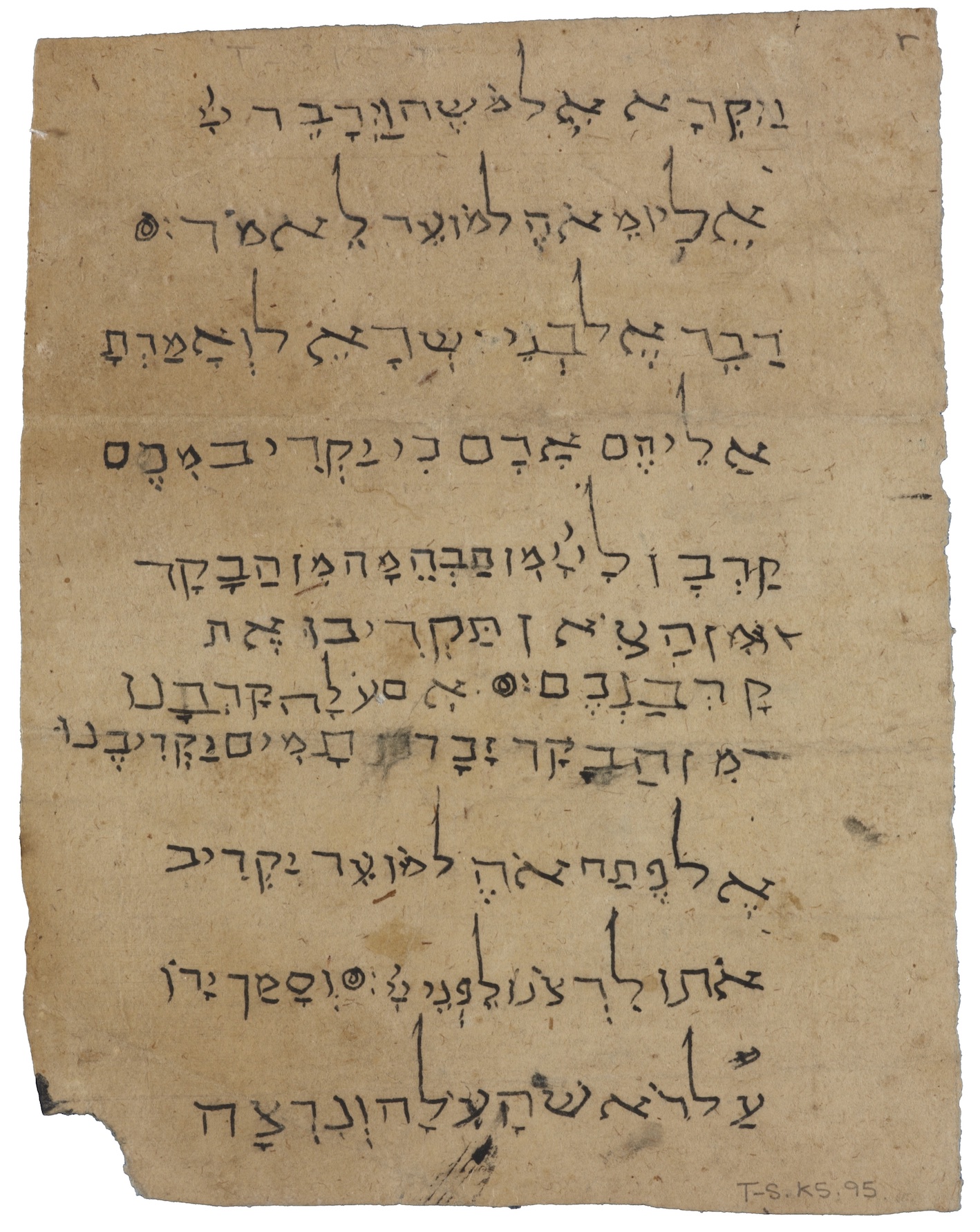
Estara, you finished your PhD in 2021 on ‘common’ Bibles in the Cairo Genizah. How did you get interested in this area?
It's a long story but I'll give you the highlights here. I have been interested in Hebrew codicology and palaeography, and Jewish-Muslim relations as seen in the Genizah since my undergraduate studies (in History and Modern Hebrew). I became particularly interested in Hebrew-Arabic-Aramaic language contact during my Master’s degree (in Islamic Studies and History), and in the development and codification of Jewish and Islamic scriptures during the medieval period. But I had always wanted to study actual Cairo Genizah manuscripts, and so when I came to Cambridge, the project formed naturally (of course with the help of my supervisor!). A project working on everyday Bibles and less formal Bibles which hadn't been studied before from the Genizah fit well with my interest in codicology and in language contact. Essentially, the question that inspired my thesis was: in a Bible written by an everyday person (and not a scribe), can we see traces of their vernacular speech influencing the ‘mistakes’ that they make? I decided to do an in-depth and data driven study on 'common' Bibles. It became statistic when I realised that there were patterns of both vocalisation and codicological features which seemed to correlate, so I collected as much data as I could and subjected it to statistical analysis alongside traditional linguistic and codicological analysis.
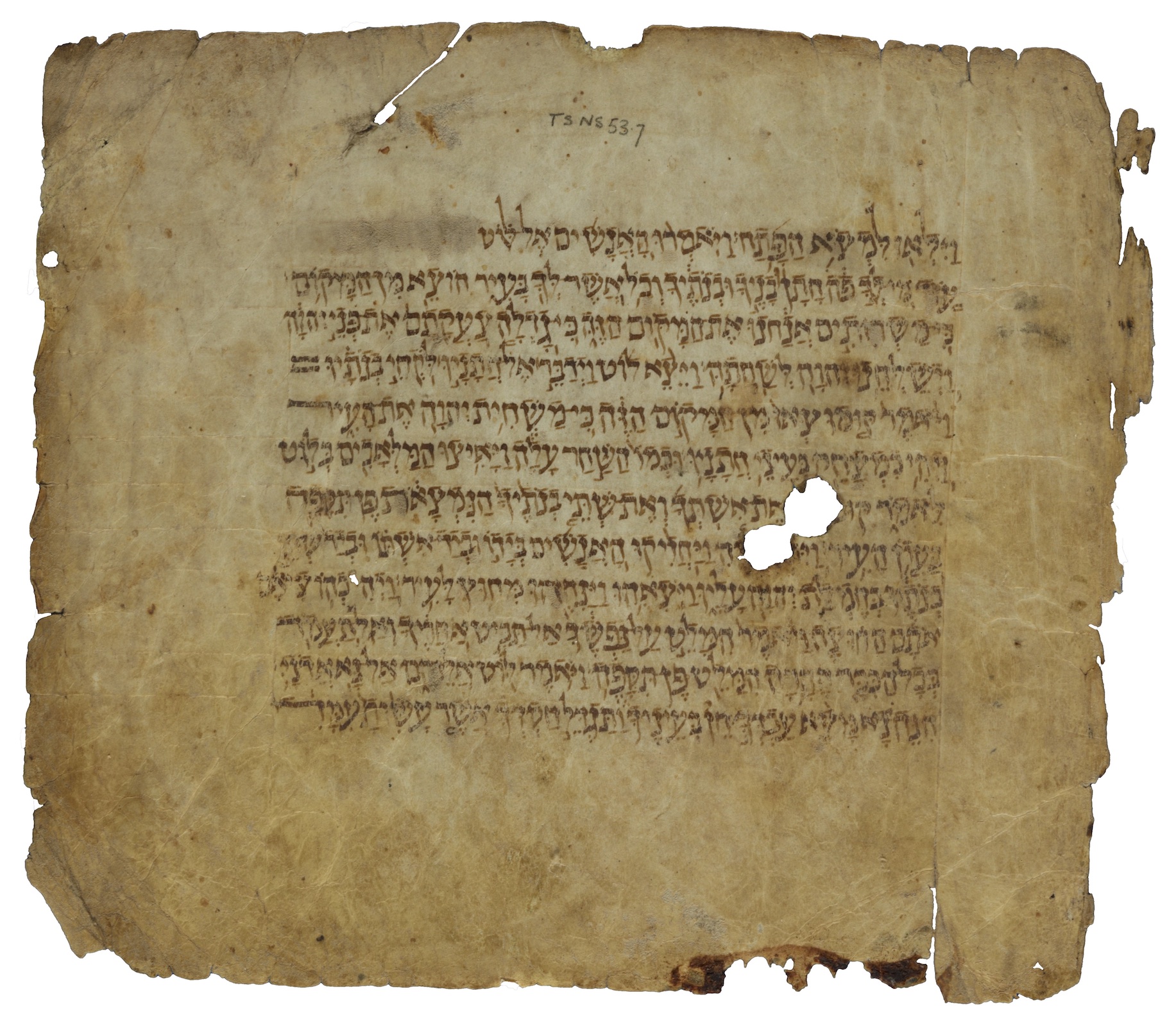
T-S NS 53.7: a single column parchment Bible
How did you identify your corpus of ‘common’ Bible manuscripts?
That was particularly challenging at first, because a good working definition of a ‘common’ Bible is still needed. Essentially, I noticed that all of the Tiberian Masoretic codices which we study in depth for the history of the vowels and accents, which were expensive and professionally made, had specific codicological features (parchment, three columns, full Masoretic apparatus, and Tiberian vocalisation and accentuation which reached a high level of consistency), and appear to be produced with a similar (visual) style. They are professionally made and beautiful. But Bibles (with Tiberian vocalisation) which lacked one or more of those features tended to differ widely in their style, aesthetic quality, and also consistency of vocalisation. So, I decided to study the fullest range possible of Bibles which did not have the full set of formal features (again, parchment, three columns, full Masoretic apparatus, and Tiberian vocalisation which reached a high level of consistency). This means that not all of the Bibles I study in my thesis would be considered strictly ‘common’. Some are very professionally made, just not ‘model’ as some scholars would say. Essentially, I excluded what I didn't want to look at and explored the rest without too many limitations. So I look at 2 column parchment Bibles that don’t have any Masorah (and we can ask why do they not have Masorah?), Bibles on paper in any format, Bibles with a poor quality of handwriting, and 1 column parchment Bibles (which seem to be ‘expensive but common’).
I do study some Bibles with a consistent Masoretic standard of Tiberian vowels and accents, so long as they don’t have ‘model’ codicological features. I also published these definitions in an article in 2020.
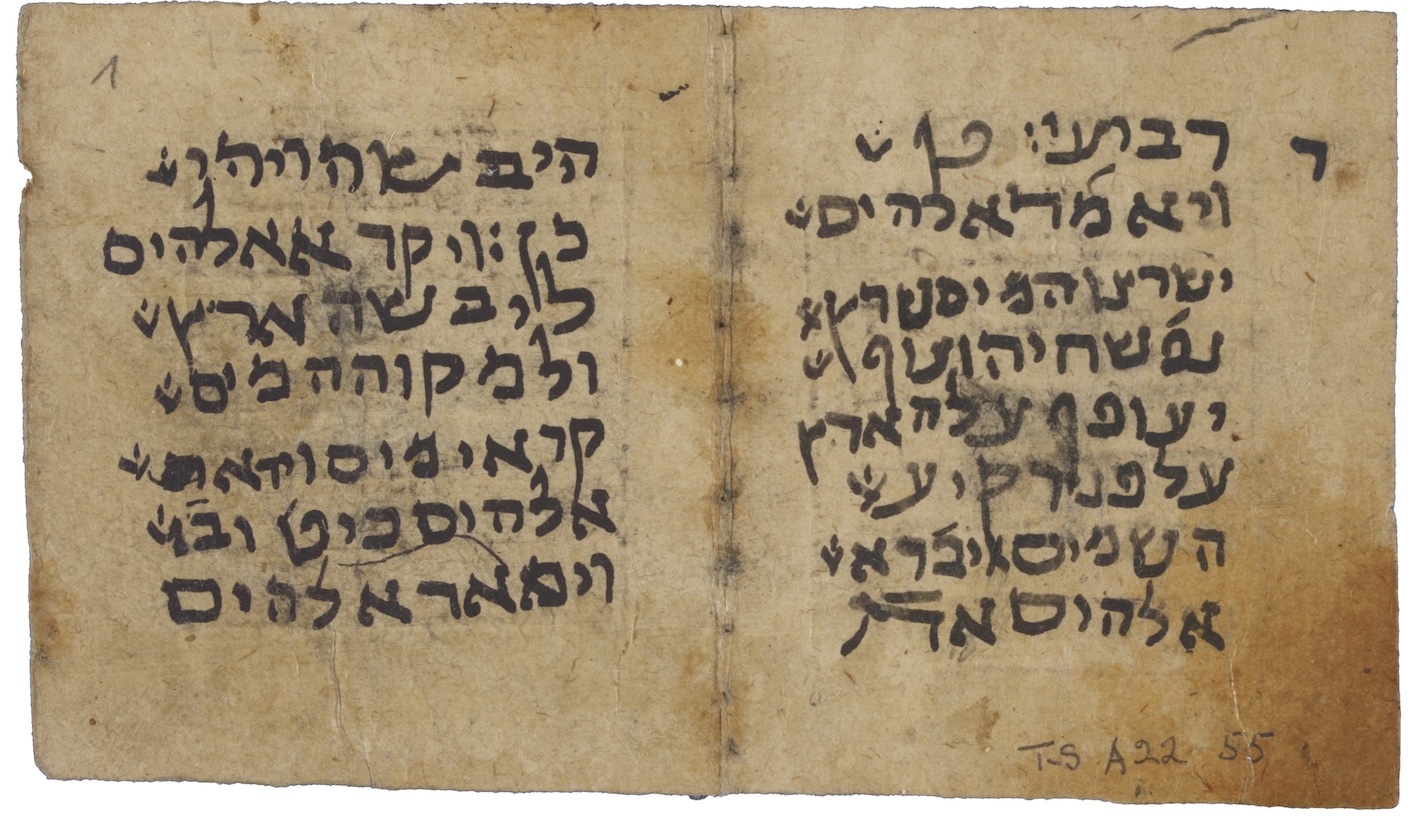
T-S A22.55: one of the smallest pocket Bibles in Estara's corpus
Do the ‘common’ Bibles you’ve identified fall into different categories?
A major part of my statistical analysis was to see if any further categorisation could be made beyond the number of columns and whether they’re on paper or parchment.
The chapters of my thesis divided the Bibles up into pretty plain descriptors/categories. But within those, I wanted to see if we could see subtypes (both linguistic – through looking at vowel sign interchanges and odd diacritic usage – and codicological). For any given Bible (say, Bibles on parchment with 1 column only), can we distinguish groups of those Bibles based on shared features? I logged pretty comprehensive codicological and linguistic features in a database, and then ran machine learning algorithms on those features to search for patterns, and then studied the patterns to see if they could be validated by what we already know from Hebrew linguistics and codicology. I found that there are definite groups, many of which are very coherent.
In short, there are many different styles of Bibles (codicological styles), and different groupings of linguistic features (through vowel sign interchanges), which span the entire Middle East and which represent a rich and dynamic culture of everyday (and less model) Bible copying, study, and production. Oftentimes codicological style and linguistic grouping go together. Though I need to study this more.
Do you particularly see them appearing in a certain time period?
The entire corpus spans the range of the major Genizah period (10th-12th century, mainly). Of course, the parchment Bibles tend to be older (but not always, we have some later examples of Bibles written on parchment on the basis of palaeographic grounds). Bibles written on paper can go up to a pretty late period (I looked at a couple of very late, 14th or 15th c. specimens). Different styles seem to go with different periods. It’s interesting, actually, the later on you go in Bibles written on paper, the more they tend to adhere linguistically to what we consider ‘standard’ Tiberian vocalisation. Earlier Bibles on parchment and paper tend to have very chaotic interchanges of vowels, and this trend dies out over time.
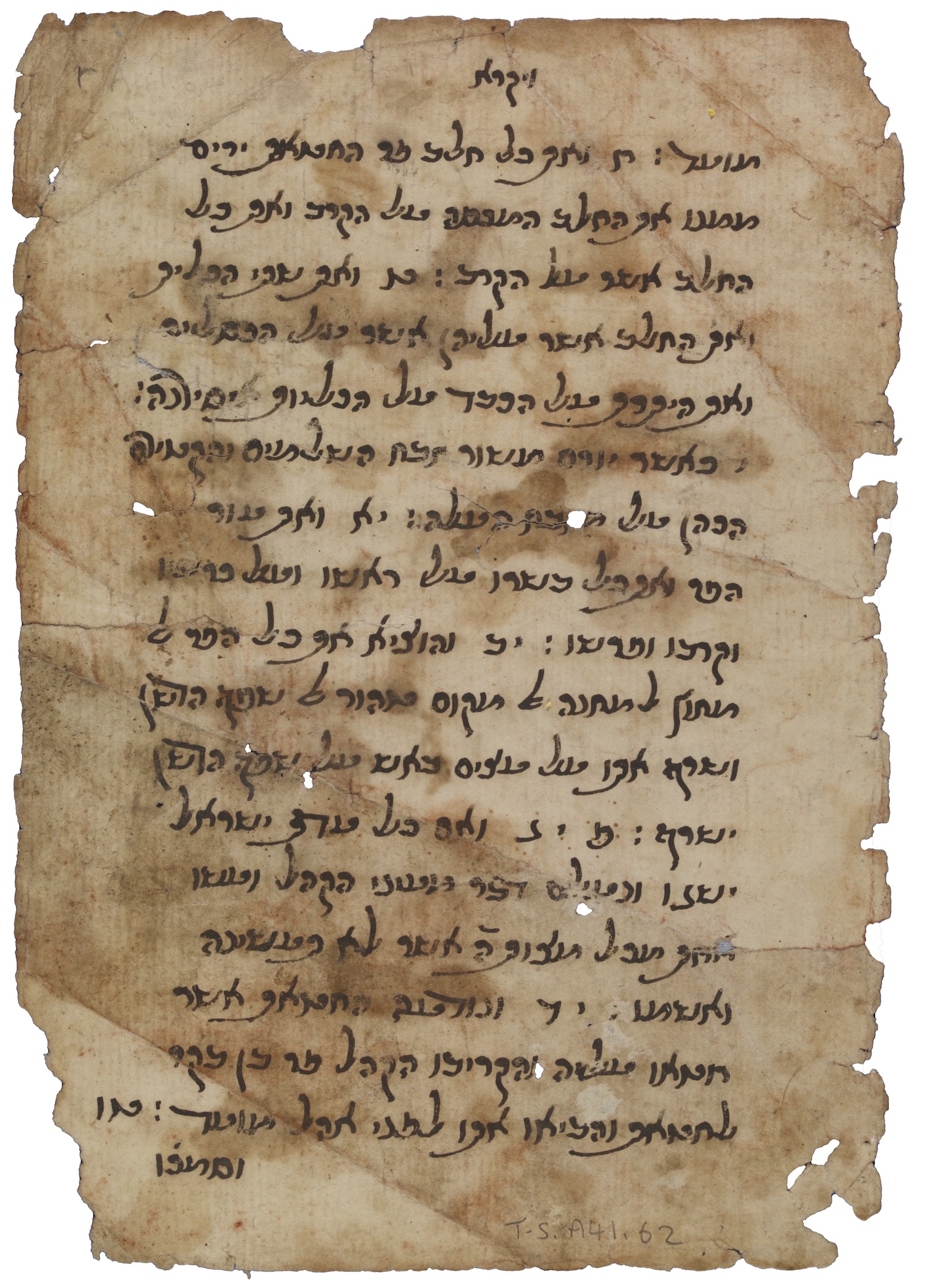
T-S A41.62: the latest 'common' Bible in Estara's corpus (16th c. paper)
What sorts of information can we deduce from these ‘common’ Bibles about the people who wrote them?
It depends on the particular class of Bibles you are looking at. I'll use Bibles written in a less-scribal script (so, written by novices or scribes in training, or scribes without a high degree of skill) as an example. Based on the quality of the handwriting, and the passage, you can often deduce the purpose of the Bible (many children who had already learned to write would copy out passages of Leviticus on cheap quality paper, for example). Based on particular patterns of vowel sign interchange, you can deduce that the pronunciation of the reader or copyist perhaps had fewer vowels than we see in Tiberian Hebrew (for example, I looked at Bibles which reduce their vowels down to essentially 3 short vowels, and one could consider that to be an ‘Arabicising’ influence on the pronunciation). I also have Bibles in my corpus which switch between Hebrew and Arabic script, but which are very informal in their appearance – so it’s likely that their copyist could write both languages (and the Arabic script seems to be of a higher quality than the Hebrew, which could suggest they are more comfortable or experienced writing in an Arabic script). I also looked at Bibles which include lines of Aramaic Targum at the ends, or some Aramaic liturgy – and again many of these are written in a lower-quality script, which indicates that everyday people may have been studying Targum. Sometimes the size and codicological style can say a lot about use. I found very tiny Bibles which could fit in a pocket and be used for personal study.
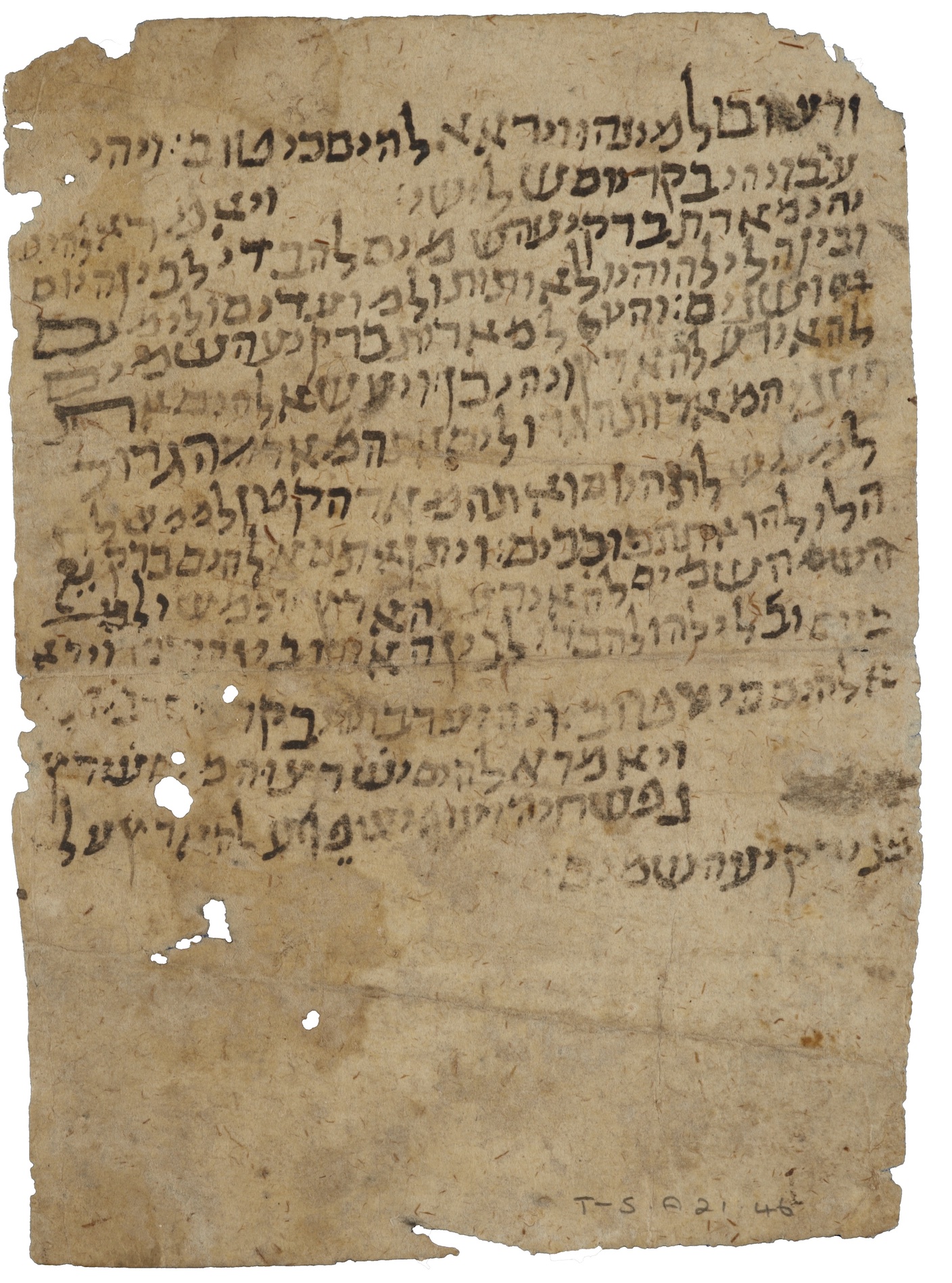
T-S A21.46: this Bible switches to Arabic script mid-word
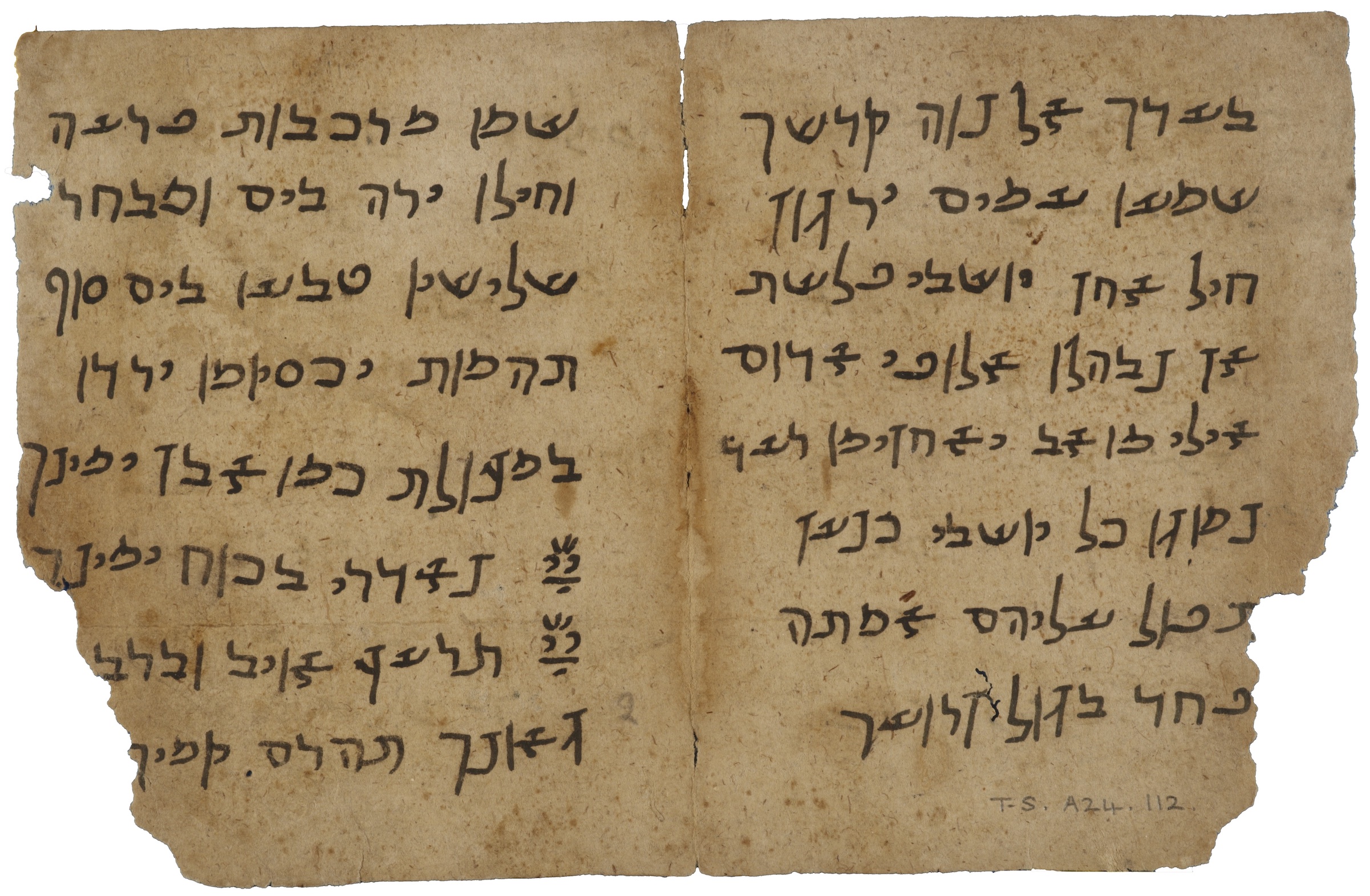
T-S A24.112: a very odd, unprofessional script. The second leaf has Targum
Some of these have a very basic script, which indicates they were written by their owner for personal use. Some Bibles are larger and written by professional scribes but lack full vowels (often leaving out ‘unnecessary’ things like silent shewa, or even a Bible where just the accents are written, but no vowels). Each Bible has a story to tell about how it was used, and who used it.
Thanks, Estara!
Estara Arrant is a Research Associate at the University of Cambridge, working on the project TEXTEVOLVE: A New Approach to the Evolution of Texts Based on the Manuscripts of the Targums.

Add new comment